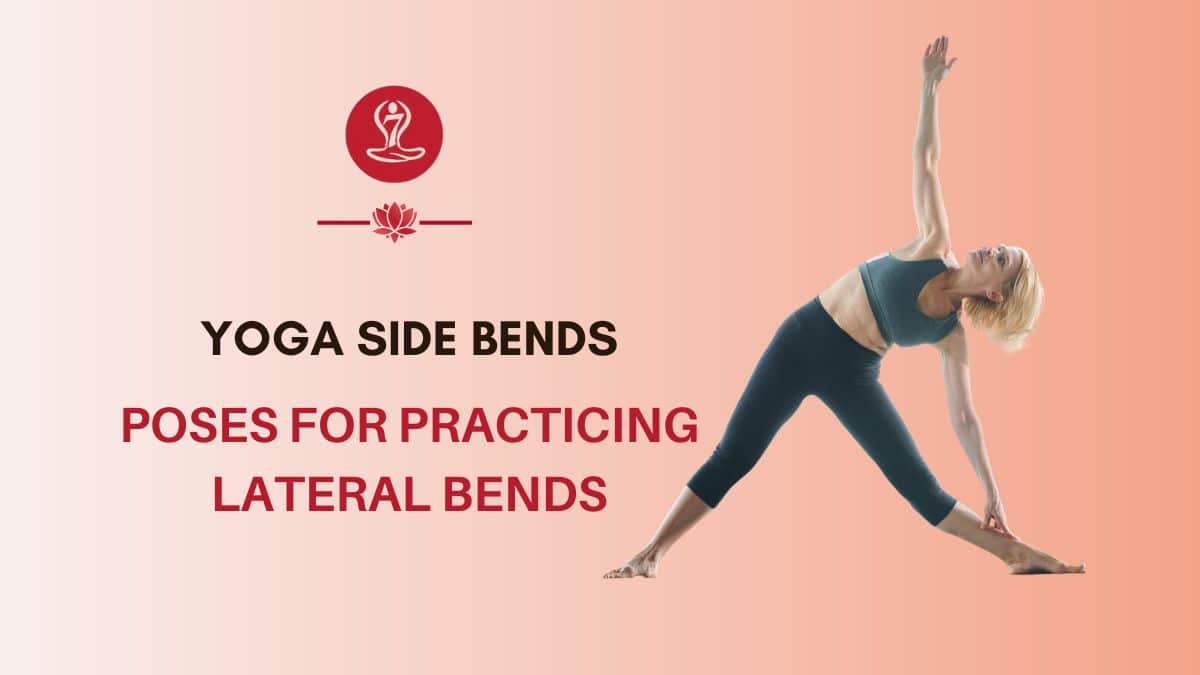Yoga Side Bends: 5 Poses for Practicing Lateral Bends

Side Bend Yoga refers to a category of yoga poses that involve lateral stretching and bending of the spine, targeting the muscles along the sides of the body. These poses are designed to increase flexibility, release tension, and create space in the ribcage, promoting better breathing and improved posture. Yoga side bend poses can be practiced in a standing, seated, or reclined position, and they offer various physical and energetic benefits.
In Yoga Side-bending, the practitioner typically elongates one side of the body while maintaining stability and balance. This lateral stretching helps to lengthen the intercostal muscles, obliques, and quadratus lumborum, among others. By doing so, it can alleviate tightness or discomfort in the side body, improve spinal mobility, and enhance overall flexibility.
Yoga Side Bending Pose
Here are some common side-bending yoga poses that are designed to stretch and lengthen the muscles along the sides of the body, promoting flexibility and mobility in the spine.
Swaying Palm Tree Pose (Triyaka Tadasana )
Triyaka Tadasana is a variation of the Tadasana or Mountain Pose. It is a standing yoga pose that involves gentle lateral bending of the spine.
Start by standing tall with your feet hip-width apart. Place the fingers of both the palms together on the head. The palms should be facing upward. bending your upper body to the right side. Maintain a strong and stable base with both feet planted firmly on the ground. Avoid leaning forward or backward. Repeat the same on the other side and bend your upper body to the left side.
Extended Triangle Pose (Utthita Trikonasana)
Trikonasana provides a deep stretch along the entire side body, including the intercostal muscles, obliques, and quadratus lumborum. This stretching helps to lengthen and release tension in these muscles, promoting increased flexibility and mobility.
Steps: From a standing position, step your feet wide apart. Extend your arms out to the sides and reach forward, placing one hand on your shin, ankle, or a block, while extending the other arm up towards the ceiling. Gently stretch the side of your body and lengthen from your fingertips to your heels.
Gate Pose (Parighasana)
Parighasana involves a deep stretch along the side body, from the fingertips to the hips. This helps to lengthen and release tension in the intercostal muscles, obliques, and quadratus lumborum, promoting greater flexibility and mobility in the torso. Parighasana allows for greater lung capacity and improved breathing. It can help enhance respiratory function and increase oxygen intake.
Steps: Kneel on the floor with your knees hip-width apart. Extend one leg out to the side and press the opposite hand into the floor or a block. Reach the other arm overhead and bend sideways towards the extended leg, feeling the stretch along the side body. Repeat on the other side.
Side Angle Pose (Parsvakonasana)
Parsvakonasana provides a deep stretch along the entire side of the body, from the fingertips to the back heel. The twisting action can help stimulate the digestive organs, improving digestion and supporting healthy gut function.
From a standing position, step your feet wide apart. Bend one knee and lower your forearm to your thigh or place your hand on the floor or a block. Extend the opposite arm overhead, creating a diagonal line from your fingertips to your back heel.
Half Moon Pose (Ardha Chandrasana)
In Half Moon Pose, the extended arm reaches overhead, creating a deep stretch along the entire side of the body. It also opens the shoulders and chest, promoting better posture and improving shoulder mobility.
Begin in a standing position, then shift your weight onto one foot while lifting the other leg. Extend one arm down to the ground or a block and lift the other arm up towards the ceiling, creating a diagonal line with your body. This pose provides a deep side stretch while challenging balance and core strength.
Conclusion
Side Bending Poses such as Ardha Chandrasana, Utthita Trikonasana, and Parighasana are often integrated into yoga sequences or practiced individually to target specific areas of the body.
Side Bend Yoga poses can improve core strength, spinal flexibility, and balance, while also stimulating the digestive system and creating a sense of expansion and openness in the body.
